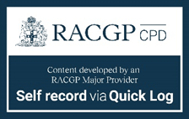Managing degenerative joint disease
Read about the management of degenerative joint disease, or osteoarthritis, and how GPs can provide effective management strategies based on protocols.
.jpg)
HealthCert Education
Degenerative joint disease, also known as osteoarthritis, is a prevalent condition that affects millions worldwide. According to the WHO, 73% of older adults above 55 years are affected, with women accounting for 60% of the cases. These statistics underscore the urgent need for effective management strategies for degenerative joint disease.
Osteoarthritis affects the person as a whole. It is a progressive pathological condition characterised by loss of cartilage, loss of muscle function, swelling, pain, joint stiffness, instability, and reduced quality of life. Morphological signs of osteoarthritis (OA) are thought to be typical findings that arise from numerous causes involving different risk factors. The patient reports severe night pain, difficulty in performing basic ADLS, pain while performing activities, and crepitus/clicking sounds from joints.
OA develops gradually within 10 to 15 years and commonly affects the knee joints, followed by the hip, shoulder, wrists, and hands. OA typically affects one joint; however, as the disease progresses, it affects multiple joints. Older patients complain of pain in bilateral knee joints, hip/groin pain, or shoulder periarthritis.
OA is detected early by physical and radiographical assessment. The short-term goal is to delay the progression of OA through primary prevention. This includes weight management, regular physical activity, physiotherapy sessions, and wearing supportive footwear.
Prevention of osteoarthritis in the knees
A clinical study suggested that aerobic exercise, strength training, and neuromuscular physiotherapy training prevent knee injury, and these exercises have shown beneficial results in patients with knee OA.
OARSI Guidelines for non-surgical management of osteoarthritis
The OA Research Society International (OARSI) published systemically reviewed evidence-based treatment guidelines in 2010.
The OARSI guidelines recommended core treatments (land-based exercise, weight management, strength training, water-based exercise, self-management, and education). They labeled them appropriate for all OA types - i.e. knee OA without co-morbidities, knee OA with co-morbidities, multi-joint OA without co-morbidities, and multi-joint OA with co-morbidities.
However, the OARSI recommends surgical interventions if the non-surgical approach fails to provide beneficial results.
NICE guidelines
The National Institute of Health and Care Excellence (NICE) proposed guidelines for the diagnosis and management of OA. These guidelines involve a three-point diagnosis and assessment using a holistic approach. The guidelines allow the patient to explore both pharmacological and non-pharmacological approaches.
According to the NICE protocol, the recommended drug of choice for OA includes paracetamol and NSAIDS in combination with gastro-protective agents.
Non-pharmacologic management includes a holistic approach, using activity, exercise, and weight management to effectively manage body weight. The patient is well educated about their condition, and self-management protocol is taught using verbal and visual cues. The NICE guidelines recommend aerobic exercise and localised muscle strengthening to patients of all age groups and pain / disability level.
Primary care health physicians should carefully monitor and regularly follow-up with patients who experience degenerative joint disease. Onward referral to other clinicians, a physiotherapist, or a surgeon may be indicated if the patient reports severe pain and impaired functional limitation.
- Dr Humda, Physiotherapist
Learn more about this topic in the HealthCert Professional Diploma program in Musculoskeletal & Sports Medicine - fully online or with optional practical workshops.
Engaging with this blog can help meet your annual
|
|
If you consume educational webinars, podcasts, articles, or research on this blog, you can Quick Log CPD hours with the RACGP via the usual self-submission process. You will be asked to reflect on what you have learned, and you will require supporting evidence such as a screenshot. |
- https://www.who.int/news-room/fact-sheets/detail/osteoarthritis
- https://www.ncbi.nlm.nih.gov/books/NBK568417/
- https://pubmed.ncbi.nlm.nih.gov/24553908/
- https://www.nature.com/articles/nrrheum.2015.135
- https://oarsi.org/oarsi-white-paper-oa-serious-disease
- https://www.ncbi.nlm.nih.gov/books/NBK585963/
- https://www.nice.org.uk/guidance/ng226/documents/draft-guideline

 1800 867 1390
1800 867 1390

.jpg)
.jpg)
-1.jpg)



